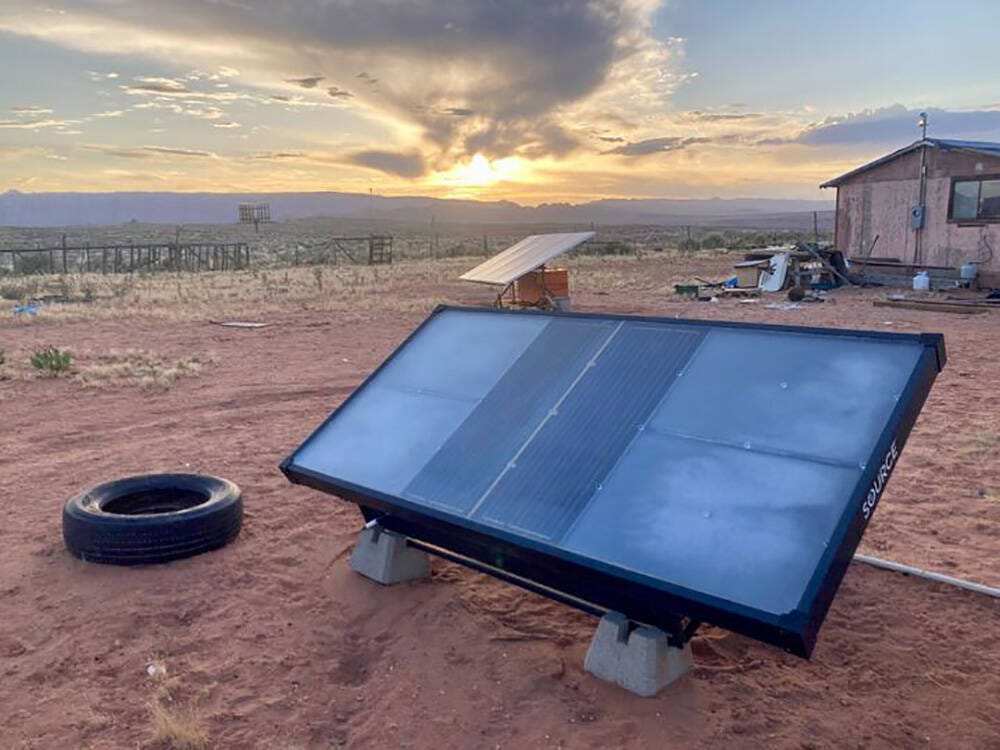Solar energy and modern solutions for the Drinkable Water Issue in Mexico
Water scarcity is a critical issue in Mexico, affecting both urban and rural areas. The depletion of groundwater reservoirs, coupled with climate changes and population growth, has exacerbated the water crisis. Traditional water sources and methods are no longer sufficient to meet the growing demand. There are potential modern solutions involving solar energy to address the drinkable water issue in Mexico, focusing on solar desalination and atmospheric water generators (AWGs).
The Water Crisis in Mexico
Mexico faces severe water scarcity, particularly in the northern and central regions. Groundwater over-extraction has led to the depletion of aquifers, causing land subsidence and increased pumping costs. In Mexico City, the water supply is unsustainable, with groundwater levels chronically declining since the 1960s. The city relies heavily on imported water and groundwater, which are both under significant stress. The situation is further complicated by inadequate infrastructure, leading to high water loss due to leaks.
Solar Desalination

MIT Solar “Thermohaline” Desalination System
Source: https://news.mit.edu/2023/desalination-system-could-produce-freshwater-cheaper-0927
One of the most promising modern solutions is the solar desalination system developed by MIT (lead scientist Lenan Zhang). This system uses solar energy to drive a multi-stage membrane distillation process, which is highly efficient and can produce significant amounts of fresh water from seawater. The system operates passively, using solar energy to heat water and drive evaporation, leaving salt behind. The resulting water vapor is then condensed into drinkable water. This technology is cost-effective and scalable, capable of producing enough water to meet the daily needs of a small community. Key Features:
High Efficiency: The system has a higher water-production rate and a higher salt-rejection rate than other passive solar desalination concepts.
Cost-Effective: The system can produce drinking water at a rate and price that is cheaper than tap water.
Scalability: The system can be scaled up to produce about 4 to 6 liters of drinking water per hour, sufficient for a small family

Comparison with Other Solar Desalination Technologies
Source: https://www.mdpi.com/2073-4441/15/12/2274
Traditional Solar Still Desalination:
Efficiency: Traditional solar stills typically have low efficiency, producing about 3 to 4 liters of water per square meter per day.
Challenges: They suffer from significant heat losses and salt accumulation, which reduces their effectiveness over time.
Solar-Powered Reverse Osmosis (RO):
Efficiency: Solar-powered RO systems are more efficient than solar stills, with efficiencies ranging from 30% to 50%.
Challenges: These systems require significant energy input and are prone to fouling and scaling, which can increase maintenance costs and reduce operational efficiency
Concentrated Solar Power (CSP) Desalination:
Efficiency: CSP systems, such as parabolic trough collectors and solar power towers, can achieve thermal efficiencies of 60% to 75%.
Challenges: CSP systems are complex and expensive to install and maintain. They also require large areas for the solar collectors, making them less suitable for small-scale applications
Forward Osmosis (FO) Desalination:
Efficiency: FO systems have lower energy requirements compared to RO but are generally less efficient in terms of water production rate.
Challenges: FO systems are still in the experimental stage and face challenges related to membrane fouling and the need for effective draw solutions.
Specific Advantages of the MIT “Thermohaline” System
Salt Rejection: The MIT system effectively mitigates the issue of salt accumulation by using a layered design that allows for natural convective circulation. This prevents salt from clogging the system and ensures long-term operation without frequent maintenance.
Passive Operation: Unlike other systems that require external power sources, the MIT system operates entirely on solar energy, making it highly suitable for off-grid applications.
Cost Efficiency: The system's design allows it to produce water at a lower cost than traditional tap water, making it an economically viable solution for large-scale implementation.
Implementation in Mexico
Given Mexico's extensive coastline and abundant solar energy, large-scale solar desalination plants can be established along the coast. The fresh water produced can be transported to inland cities via pipelines, providing a reliable water source independent of climate variability. This approach can significantly alleviate water scarcity in urban areas and reduce the reliance on over-exploited groundwater resources.
Atmospheric Water Generators (AWGs)
SOURCE Hydropanels
Source: https://www.source.co/how-hydropanels-work/
SOURCE Hydropanels are an innovative solution that uses solar energy to extract water vapor from the air and condense it into liquid water. These panels are designed to work in a range of humidity conditions, including low humidity, making them suitable for arid regions like Mexico. Each panel can produce about 5 liters of water per day, providing a decentralized, off-grid water source that is particularly useful in remote or arid areas.
Feasibility in Mexico
In polluted, low-humidity environments like Mexico City, SOURCE Hydropanels can still produce clean drinking water, although their efficiency may be reduced. While the production capacity may not be sufficient for large-scale urban needs, these panels can provide a reliable water source for individual households or small communities, supplementing other water supply methods.

Comparisons
1. Solar Desalination (MIT System):
Initial Cost: High initial investment for infrastructure and solar panels.
Operational Cost: Low, as it primarily uses solar energy.
Benefits: Sustainable, scalable, and environmentally friendly. Suitable for coastal areas with abundant solar energy.
Drawbacks: High infrastructure cost, very novel technology without any turn-key industrial solution yet available.
2. Atmospheric Water Generators (AWGs):
Initial Cost: High, with each SOURCE Hydropanel costing around $2,000 to $3,000.
Operational Cost: Low to moderate, depending on energy source (solar panels reduce operational costs).
Benefits: Decentralized, off-grid solution. Suitable for remote or arid areas with limited infrastructure.
Drawbacks: High cost and high difficulty for mass adoption in urban areas, skeptics indicate high cost.
Conclusion
The drinkable water issue in Mexico requires a combination of innovative and sustainable solutions. Solar desalination and atmospheric water generators offer promising avenues to ensure a reliable and sustainable water supply given the constant reduction of solar panel cost. By using these modern technologies and integrating them into a comprehensive water management strategy, Mexico can have alternative solutions to its water scarcity challenges.






